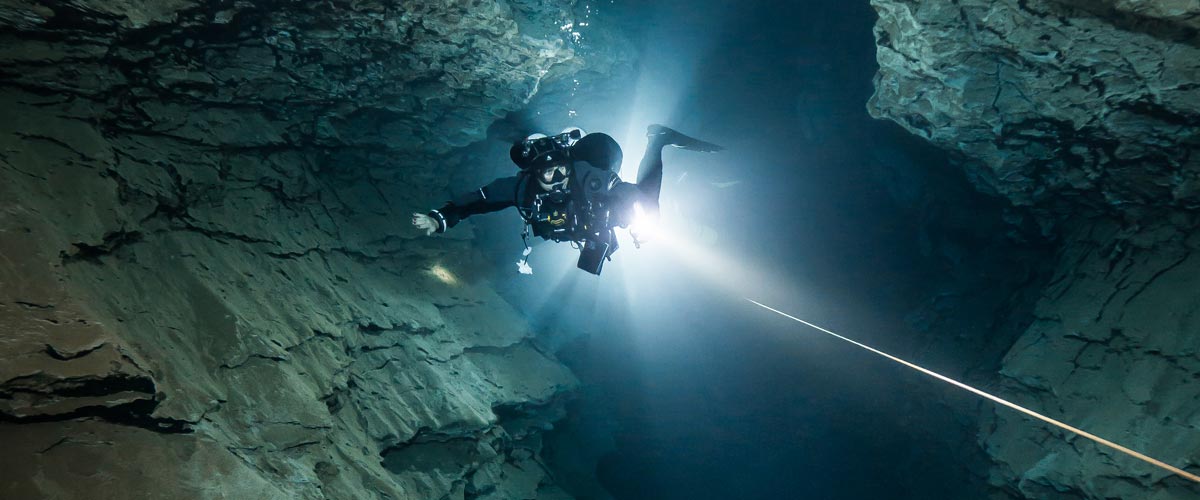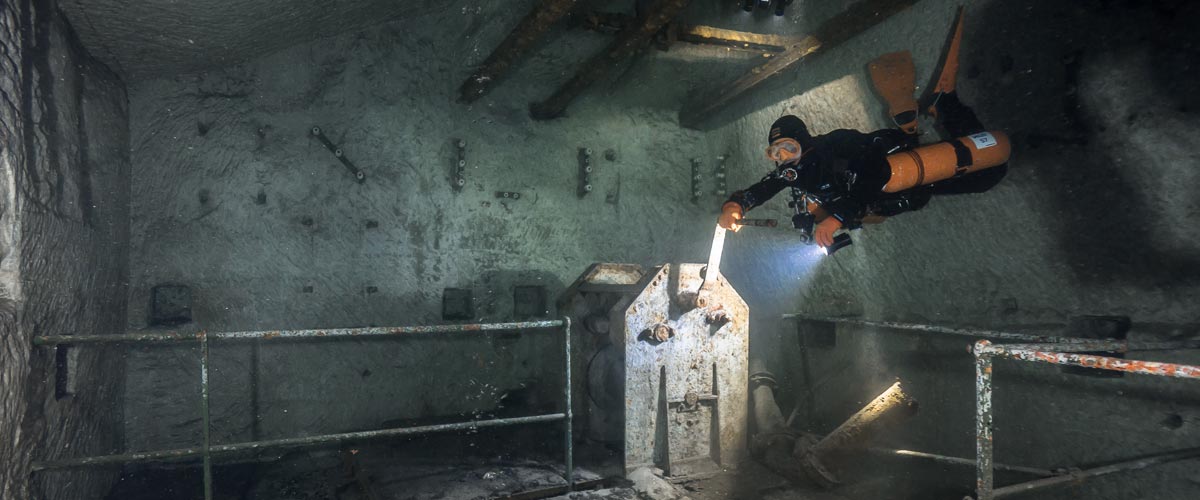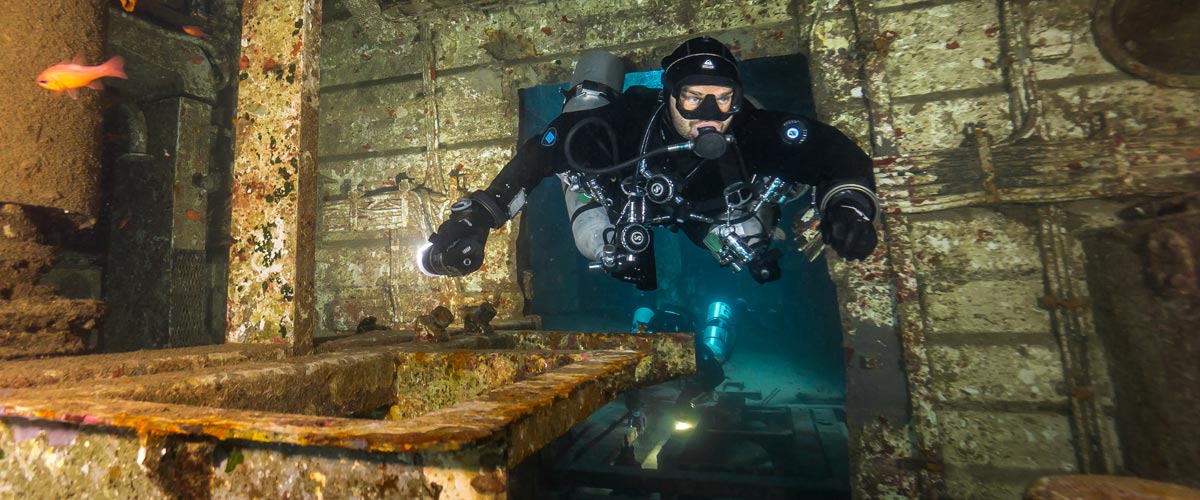Dive Training Blogs
Diving for All: the HSA Dive Buddy Course
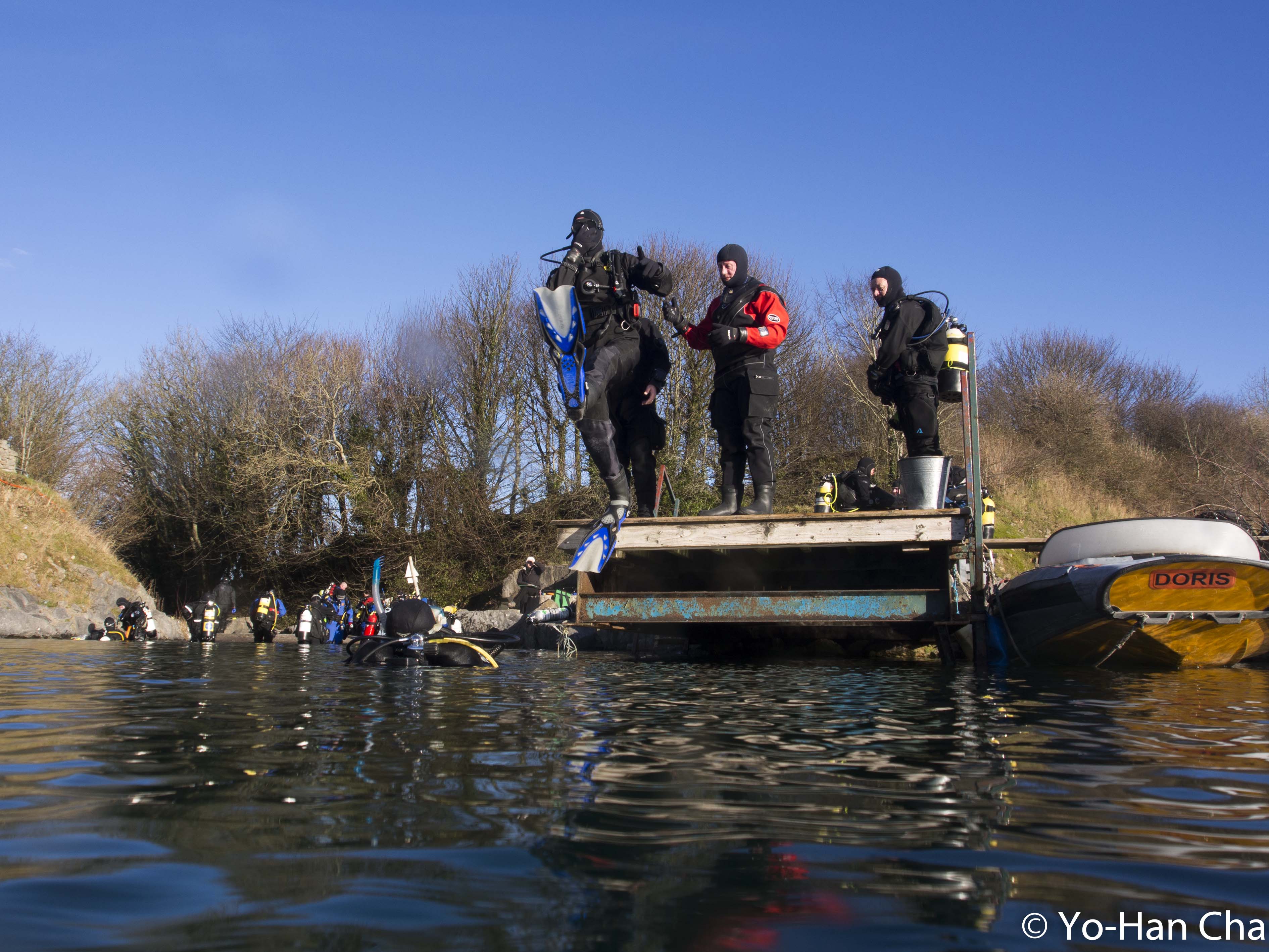
The Handicapped Scuba Association (HSA) is dedicated to improving the physical and social well-being of people with disabilities through scuba diving and at Bolton Area Divers (BAD) we’ve just qualified ten HSA Dive Buddies to help us to open up scuba diving to those with disabilities.
It all started when Bolton Area Divers successfully ran Try Dives for children with disabilities. This inspired the BAD Dive Centre Manager, Shereen Roberts, to give all divers of all abilities the same opportunity to scuba dive. To achieve this, she contacted the HSA via Diveability as HSA gives certified training for disabled divers and Shereen and four other instructors from BAD went and received the HSA Instructor training from none other than the founder of HSA himself, Jim Gatacre.
Now, able to instruct in Bolton, Shereen asked the club members if any of us would like to be an HSA Dive Buddy and ten of us said “Yes!”. We were split into two teaching groups and I was part of the first. The theory element of the HSA Dive Buddy Course turned out to be a lot more detailed than I expected, in particular when it took us through the disabilities that can affect people, but in most cases, it was encouraging to find out that they could still go scuba diving!
The practical part of the HSA Dive Buddy Course involved us simulating three different disabilities (blindness, paraplegia and quadriplegia) in order to give us first-hand experience in dealing with different disabilities as well as a greater empathy for what it is like to dive with a disability.
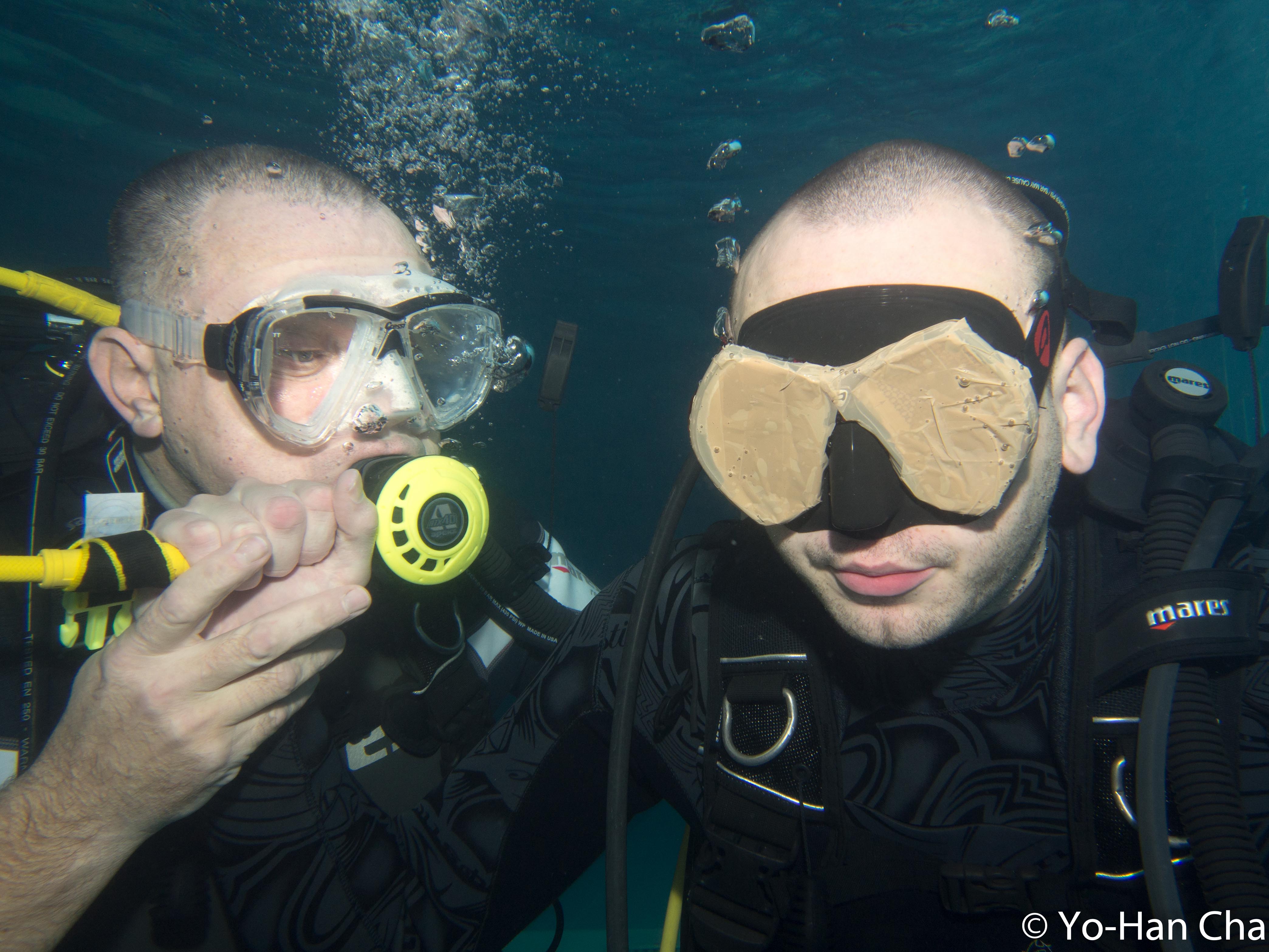
We first started practising our skills in the pool before moving onto open water and before we did so, we all had to learn to communicate with blind divers by using tactile signalling. I was surprised at how little mollycoddling a disabled student would get – basically none! Even a blind diver would be expected to assemble their diving equipment without it being laid out in a specific way for them, therefore I was expected to kit up from all my equipment that had been hastily thrown into my mesh bag the night before, whilst using a blacked out mask and therefore unable to see. I’m very grateful for being familiar with my kit.
I found that I use my core muscles more often than I realised when I was trying to be the ‘paraplegic’ diver as I had to concentrate on not correcting my body position in the water and let my feet drag along the swimming pool bottom instead of instinctively keeping them up. My buddy and I also found that we equalise differently whilst we took turns being the ‘quadriplegic’ diver. My ears evidently needed to be equalised much more than my buddy’s and my nose is smaller than his – both factors led to me breaking out of character, swimming quickly to the surface and explaining that he was pinching just the tip of my nose and that was far from sufficient.
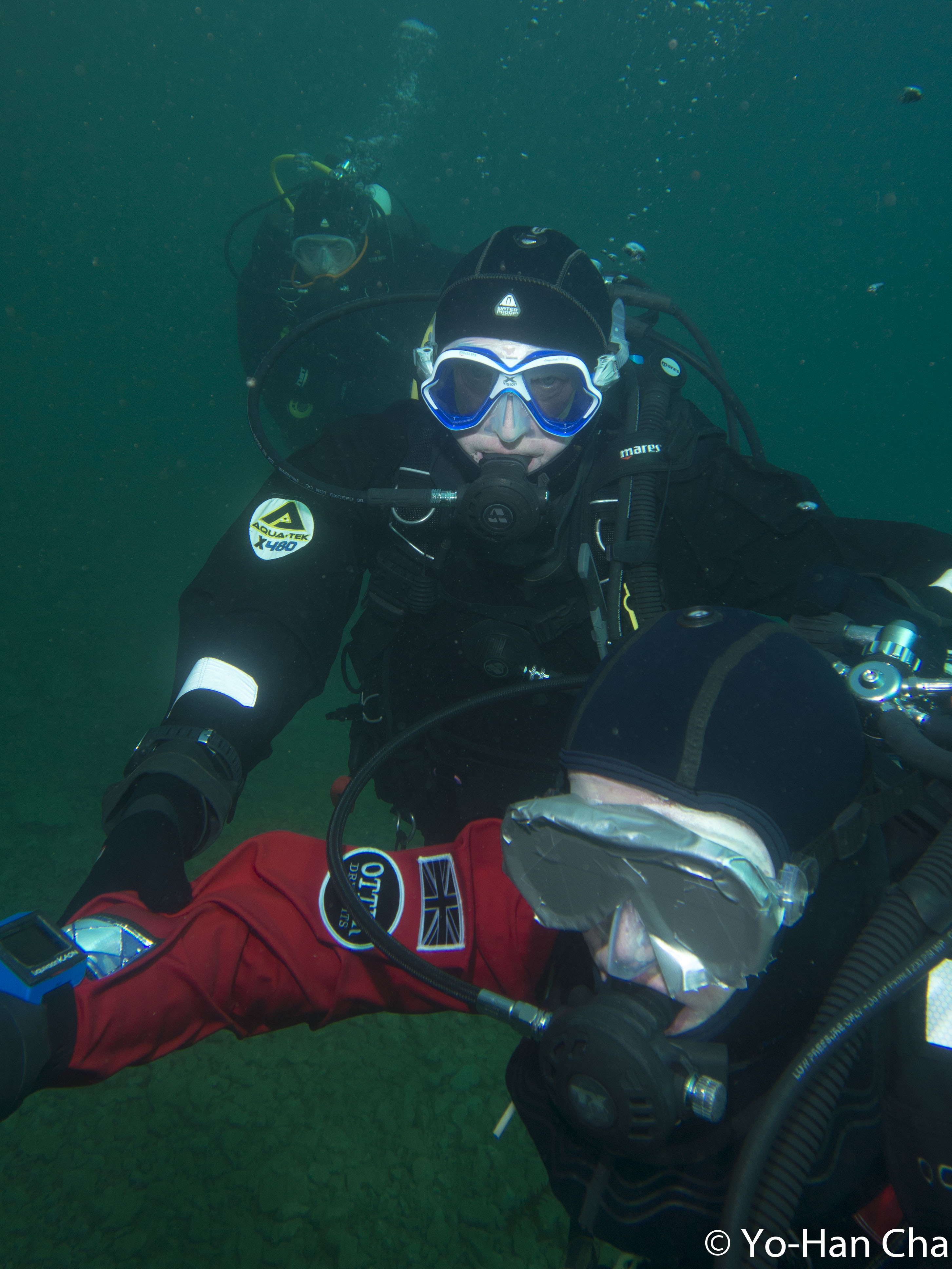
Pool skills completed, the next step was to repeat them in open water and open water meant Capernwray. In January. All of us, questioning our sanity about why we chose to do this in January, took turns kitting up once again as a blind diver, but this time we were each led to the end of the pier to do a giant stride, blind, into the water. When it was my turn, I learned that I have serious trust issues! Especially when I’m told that the edge of a pier is about one and half metres away. I literally inched my way to the edge from that point onwards. For the record the giant stride itself wasn’t a problem; just the 1.5m preceding it.
Over a cold two and a half hours we proceeded to replicate the skills we had practised in the pool. We found that controlling buoyancy of two people is difficult and that any positive or negative buoyancy had to be corrected immediately. We found that when simulating being blind, using gloves meant we were less sensitive to tactile signalling. We also found swimming without the use of our legs was very tiring whilst simulating being paraplegic. Having ironed out most issues in the pool, most of us found the quadriplegic simulation went smoothly, except for me as I had lost all feeling in my lips on account of being in cold water for over two and a half hours – orally inflating my buddy’s BCD after a CESA proved tricky. With the practical skills completed, we took a few days to thaw out and took the final test, which was thankfully multiple choice!
The HSA Dive Buddy Course was more than any of us expected. It took all of us out of our comfort zones and challenged us to be better divers, to be more considerate and aware and to hone our skills, especially our buoyancy. It also challenged our preconceptions on what people with disabilities are capable of…. I would highly recommend it.

Blogs
Intro to Tech: What is it about?
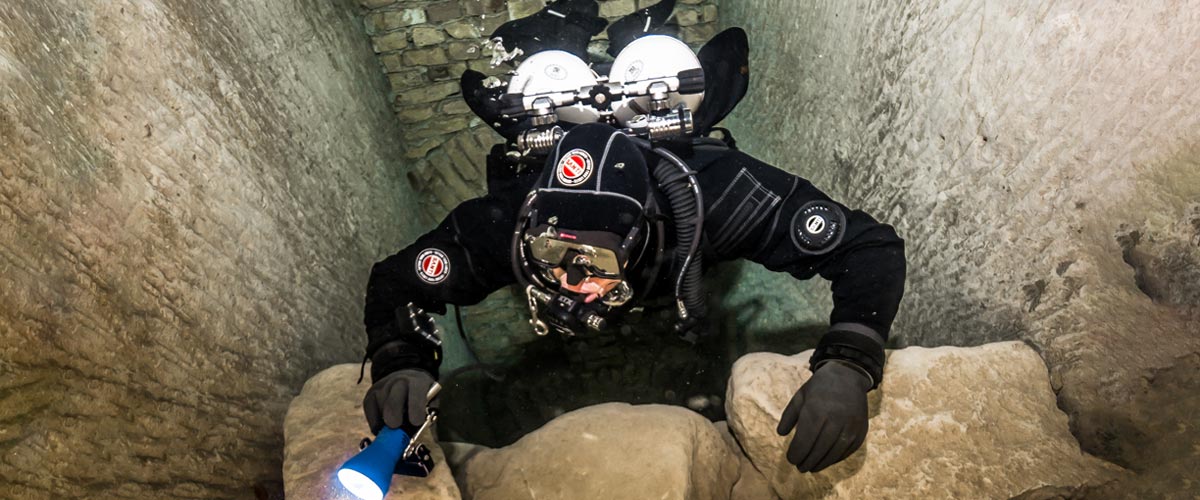
Article by José Pablo Mir
Pictures by Cezary Abramowski
The world of technical diving is exciting. It opens the door to new sites, depths, and bottom times. More importantly, it opens our minds to a new way of planning, facing, and experiencing dives, even those not purely technical.
Becoming a technical diver is a process, and like in other aspects of life, we should find the proper entry point that suits us best based on our knowledge and experience. The Introduction to Technical Diving course from TDI -the world’s largest and most recognized technical diving teaching organization- is the best option for divers who have yet to gain experience in the fundamental aspects of this new practice. The course’s content and its embrace of new techniques and technologies make it possible to acquire a solid foundation to learn and gain experience in this practice properly.
Becoming a technical diver is not something that happens overnight, whether deciding to become one or receiving a certification card stating we are now technical divers. It is a slow process extending farther away than any introductory course. It requires effort and dedication. But it will bring us satisfaction from day one -or two.
It is a matter of mentality
First, we must understand and accept that technical diving, involving greater depths, longer bottom times, exotic gases, virtual or real ceilings, and more, comes with higher levels of risk than the sport diving we have been practicing until now.
Although this discussion usually starts with a warning about risks, as I’ve done in the previous sentence, our practice is not a game of chance.
Technical diving is a rational activity that requires maturity and good judgment, and we will put everything into ensuring that each dive is a successful one -meaning we return from it safe and sound. With this understanding, we will strive to establish a mental attitude more aligned with our practice and its realities.
This new “technical diver” mindset we will develop will lead us to be more cautious in our executions, more analytical in our plans, more rational in our strategies, and more detailed in our procedures.
Experience will keep teaching us to know ourselves better, to keep our anxiety and other emotions under control, and to manage our impulses. Over time, our senses will sharpen, and we will be more attentive to the particulars of the situation we find ourselves in.
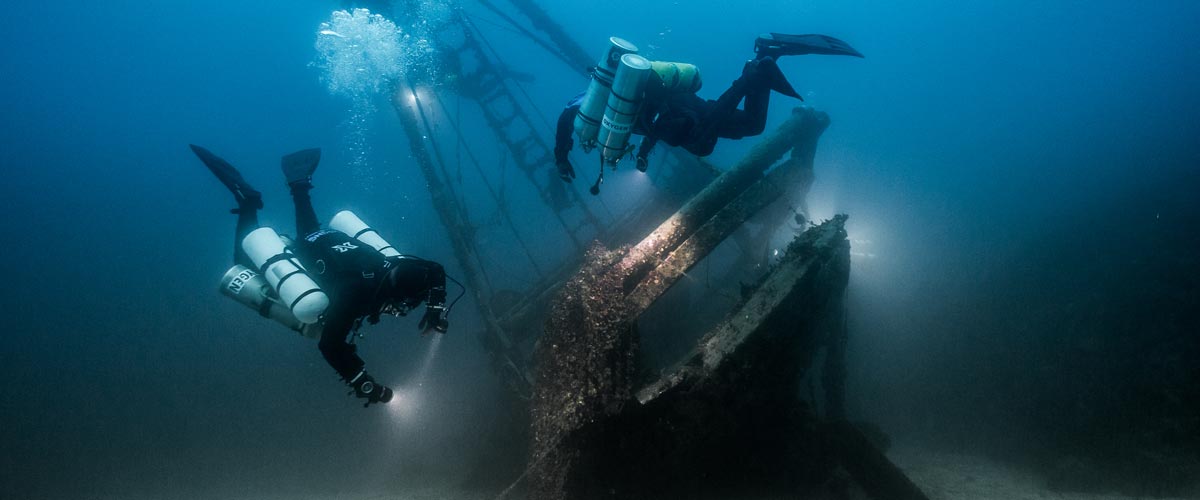
Strategies and procedures
Our strategies, those broad guiding lines tracing the path to follow, from how to approach planning to where, with what, and how we are willing to get there, will be more specific and more practical. Not because they magically become so, but because we will consciously and deliberately frame them that way.
We will establish clear, concise, and realistic procedures. Not only for the undesirable situations that may present themselves but also for those that are part of our dive objectives.
Even though, as technical divers, we often use equipment different from what we were previously accustomed to, it is essential to note that the gear does not make the diver. In a way, we could consider such equipment as the necessary tools to implement what our goal seeks to achieve, according to our strategies and procedures.
Technique plays an important role
We must put our greatest effort into learning and perfecting the different techniques we will be acquiring. Buoyancy, trim, propulsion, cylinder handling, deploying DSMBs and lift bags, valve drills, and more are essential skills we must begin to master to progress in our art. What we cannot do, when we need to do it, can harm us.
Our techniques must be effective and achieve the purpose for which they were devised. But they must also be efficient and require the least resources possible, including the time they take and the effort they demand. Effectiveness and efficiency will prevail over beauty and other considerations that may come to mind, although none of them should be mutually exclusive. A technique executed efficiently and effectively tends to have an inherent beauty.
Refining techniques is a lifelong mission. Some of them will be easy to master from the go; others, on the other hand, will be our life mission and will require many repetitions just to resemble the idea we have in mind of how they should be executed.
We must consider the environment
Our learning, the needs and musts of the practice we engage in, the experience we gradually gain, our strategies and procedures, and even our equipment and tools change with the environment.
Diving in the ocean, everything about us must be suitable for ocean dives. Conditions there rarely emulate those found in a pool, lake, or river. Variable winds and currents, greater depths, visibility conditions, other divers with uncertain skills around us, marine life, maritime traffic, distance from the coast, and many other factors add complexity and uncertainty.
It is never necessary to master the pool on the first day, but planning and aspiring to gradually cope with the ocean’s conditions is essential.
The cost of good training
We are aware that our resources are often scarce in relation to the possibilities of use we could give them if they were not. To a greater or lesser extent, we are part of the economic reality in which we are embedded.
Fortunately, the cost of good technical diver training is not an entry barrier. Comparing training and equipment costs, we see that the former are generally lower. Yes, lower cost for personalized service, essential to our future
performance and safety, than for a series of mass-produced products that are mere, albeit necessary, tools for an end.
The value of good training
The value of the training we received encompasses a range of characteristics, from emotional and methodological to technical and technological. TDI and its Introduction to Technical Diving course offer a deep and modern approach, with a teaching strategy that aims to create thinking divers, not merely obedient ones.
As technical divers, our knowledge is our primary tool. In this type of activity, what we don’t know can harm us.
Is this course optional?
Unfortunately, the fact that this Introduction to Technical Diving course is not a prerequisite for any subsequent training is an invitation to consider it optional. And we all know what usually happens to “optional” under budget constraints.
However, this course should be seen as optional only by those divers who are somehow familiar with the use of technical equipment, who have a mindset more in line with the requirements of this type of diving, who plan and execute the dives the proper “technical” way, who know their gas consumption rate, who are not intimidated by non-decompression tables, who feel comfortable using their dive computers, and know the techniques and have at least an acceptable level of buoyancy, positioning, and propulsion. Those can go straight to a more advanced training course, such as TDI’s Advanced Nitrox.
We must ask ourselves whether or not we are in that group.
Remember our goal: to have fun
Recreational diving is our passion. Jumping into the water carrying heavy equipment and having properly dotted our I’s and crossed our T’s have only one ultimate goal: fun. This is the activity we have chosen as a hobby. We must enjoy it; it must give us pleasure and make us vibrate.
Having a good time is not optional!
Blogs
Four opportunities to go pro in 2024 with Dive Friends Bonaire
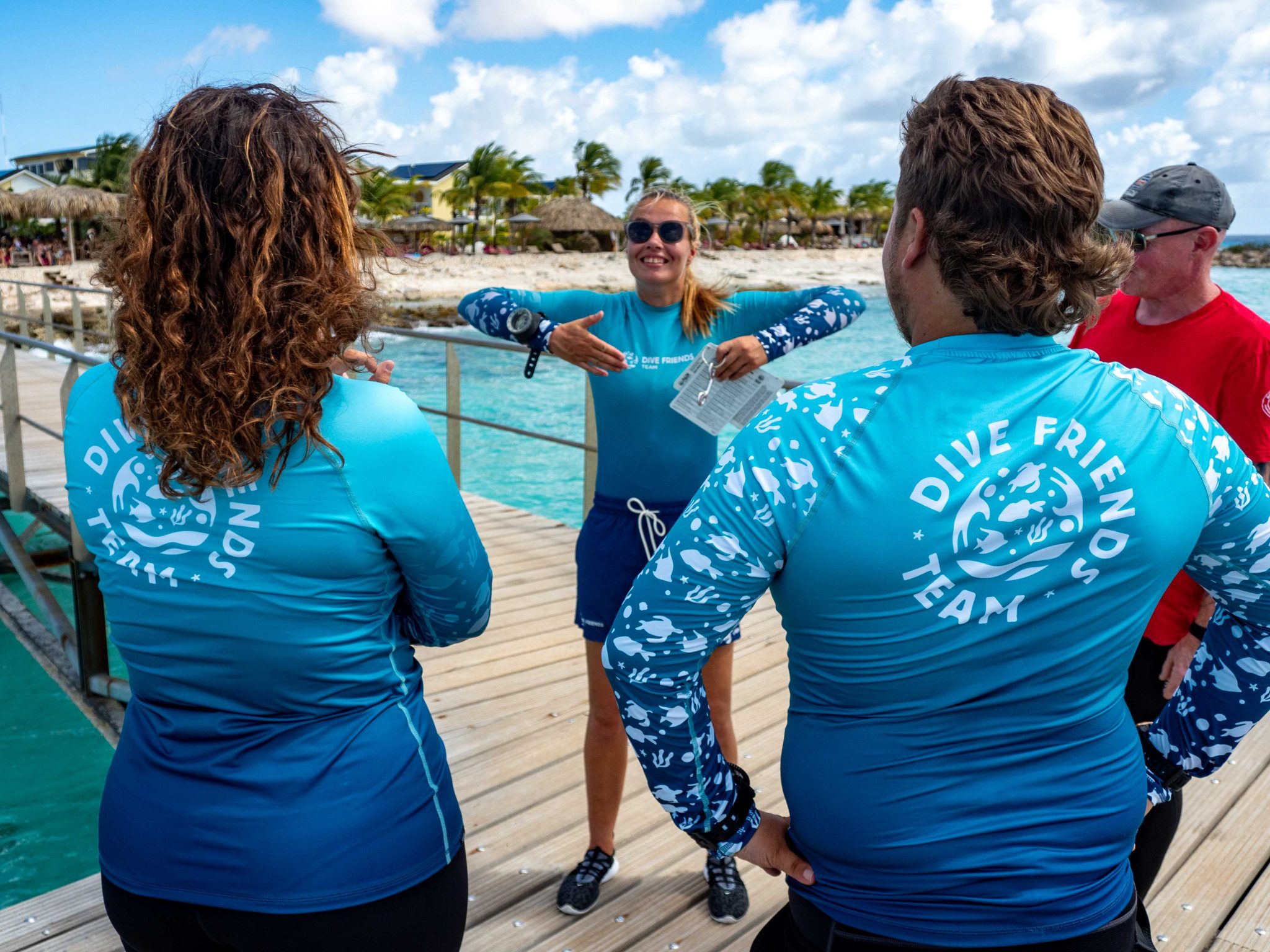
Dive Friends teaches the Instructor Development Course (IDC) several times a year to students who are eager to share their passion for diving with the world.
Dive Friends is known for the personal approach throughout the course. Their in-house course director will lead the students through every essential step, mentoring them to achieve their fullest potential as a dive instructor.
Applications for the following IDC start dates are now open:
- 12 April
- 5 July,
- 20 September
- 29 November
Partnership with Casita Palma
If the student opts for the IDC-Deluxe or IDC-Supreme package, their accommodation will be arranged for them at Casita Palma. This small and quiet resort is within walking distance from Dive Friends Bonaire’s main dive shop location and has everything you need to relax after an intense day of IDC training. Breakfast is included, so the student will always be fuelled and ready for their day.
Contact Dive Friends Bonaire’s Course Director Eddy for more information: coursedirector@divefriendsbonaire.com.
-

 News3 months ago
News3 months agoHone your underwater photography skills with Alphamarine Photography at Red Sea Diving Safari in March
-

 News2 months ago
News2 months agoCapturing Critters in Lembeh Underwater Photography Workshop 2024: Event Roundup
-

 Marine Life & Conservation Blogs2 months ago
Marine Life & Conservation Blogs2 months agoCreature Feature: Swell Sharks
-

 Blogs2 months ago
Blogs2 months agoMurex Resorts: Passport to Paradise!
-

 Blogs2 months ago
Blogs2 months agoDiver Discovering Whale Skeletons Beneath Ice Judged World’s Best Underwater Photograph
-

 Gear News3 months ago
Gear News3 months agoBare X-Mission Drysuit: Ideal for Both Technical and Recreational Divers
-

 Gear Reviews2 months ago
Gear Reviews2 months agoGear Review: Oceanic+ Dive Housing for iPhone
-

 Marine Life & Conservation2 months ago
Marine Life & Conservation2 months agoSave the Manatee Club launches brand new webcams at Silver Springs State Park, Florida















